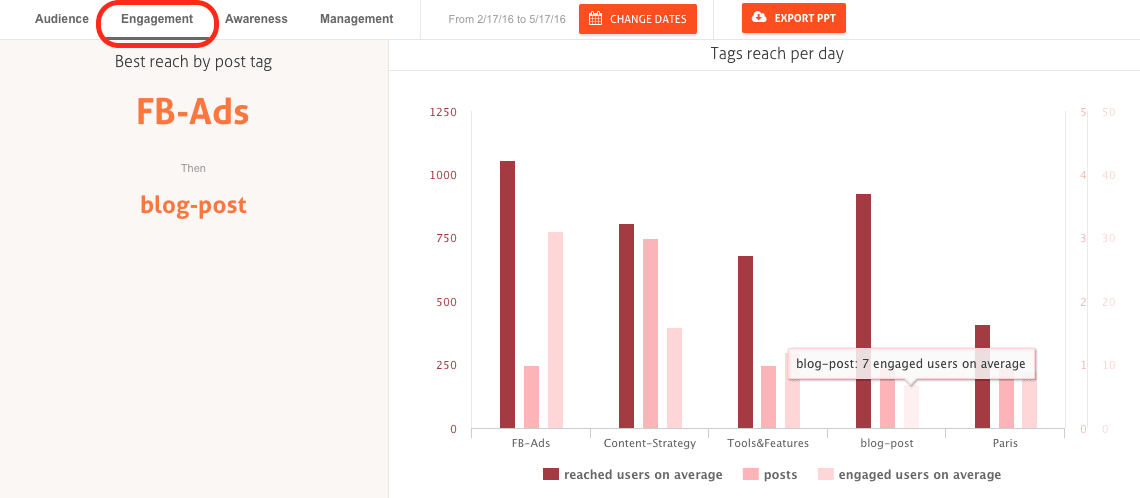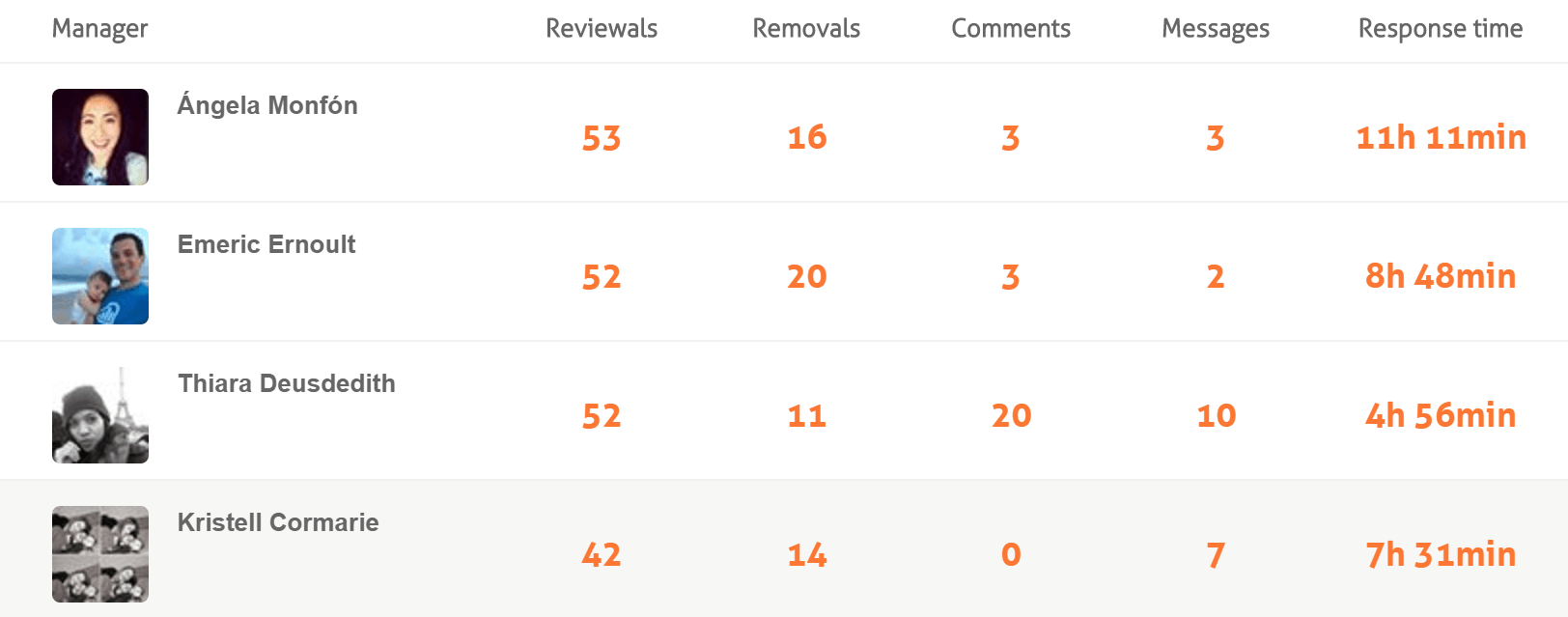The World of Social Media Tools is an overcrowded, making it difficult for users to navigate the maze of features and pricing offered to them.
As with every crowded market, the early players who raised massive VC money dominate the awareness game. They may not offer the best user experience or the best features but they keep attracting users who can’t afford to really try everything else and pick the leaders.
But when you ask social media experts if these tools offer what they really need, the answer is often a resounding “no.”
I’ve asked that question to 23 social media experts for “What Do Social Media Management Tools Really Need? 23 Experts Tell Us.” The post uncovered six common needs of social media managers that are missing from today’s tools.
Let’s dive in into each bucket and see what should be done.
1. Build relationships and make brand seem human on social
We all know that social media is not just another channel where we can blast content and hope for clicks and engagement (or sales!). It’s a place where we need to build trust with people and show them we care about them.
That’s why you read so often that social media is about “building relationships.”
But when you look at the existing tools, whether native or third party, very little has been done to do this more efficiently.
Let’s face it. When you reply to a comment or a tweet, you rarely know who’s that person you’re actually replying to. How can you “build a relationship” if every interaction you have with a person on social media feels like she’s a total stranger?
Going forward, social management tools must (and hopefully will) provide a better way to build relationships. As an end user of these tools, you’ll know who your fans and followers are, what they do in life, what status they have in your CRM (if any), what they talk about and what previous conversations you’ve had with them across all social channels.
This is one of the features I’m the most excited to work on in the near future as I’ve seen very little innovation in that area.
2. Easily manage engagement even if you’re not “always on”
Tools like Hootsuite and TweetDeck have set a trend in the social media management tools industry: feeds. Following that trend, an awful lot of tools are offering a feed view of your incoming social messages and mentions.
Monitoring the various keywords you’re following on Twitter in separate feeds makes sense to a degree. But when it comes to responding to incoming messages (direct messages, comments) to your brand, that feed view is chaotic.
Let’s take a step back from that chaotic mind set for sec and think about this question:
What’s the tool you use most in your business to respond to incoming messages?
It’s your email inbox, right?
How would you feel if your emails were organized by dozens of feeds per topic or source?
Total nightmare, right?
A couple of tools have chosen to go with an inbox-like approach like Agorapulse — which is probably the main reason for its success today. A tool that helps its users manage incoming social messages at scale and makes it easy and quickly is something all social media management tools want and need.
3. Provide insights that go beyond the basic metrics
Most tools provide statistics and reportings on most social profiles. They range in style and in the amount of statistics they provide. But they all have one thing in common: they provide very little actionable data. It’s just a data dump from the native tool’s API.
Even the “good” reporting tools merely present a “picture” of the activity of the concerned social profile. It’s like a bean counter. It tells you how much you’ve done of this and how much your audience has done of that.
But more often than not, it doesn’t tell you what you can do to improve your game — nor the impact of social on your bottom line. Social media managers — especially busy ones (which is the majority of them) — want these more actionable metrics.
This is what tools need to provide. And we’re working it for sure! For starters, we’ve added reports about topic performance. The goal is to help social media managers understand what topics resonate with their audience so that they can better refine their content strategy.
We also provide community management metrics and response time for teams to help them see how their team is performing.
It’s just a beginning and it’s not enough, but as an industry, we need to keep digging in that direction.
4. Offer more support when it comes to deciding on what to publish
That topic has surfaced many times in the expert interviews I’ve done.
As of today, all major social media management tools help you publish what you already know you want to publish. Some have tried to offer curation tools to help you find content ideas you’d like to publish, but most have failed. Even heavyweights like Buffer and Hootsuite have sunsetted their curation features. (Buffer closed it down because it couldn’t offer a wide enough array of topics. Hootsuite retired its feature because it wasn’t providing the quality level of suggestions that it wanted for its users.)
Still, when you talk to social media managers, as we did for the post, the need for a “content library” is still alive and kicking.
It looks like a big gap to me.
I Googled “social media content library tool” and couldn’t find anything valuable in the results. What this means is when it comes to deciding what to post, social media managers still need to work with old school spreadsheets, third party RSS feeds and manual curation.
This is really an area where tools need to find a better solution to make their users’ lives easier and their work more productive. The failures of Hootsuite and Buffer on aiming to fill that need taught me one thing: the solution to that need has to be more flexible than random post ideas by topic that are the same for everyone.
It has to be more customizable and offers multiple sources of content.
I’ll be excited to start working on that in the very near future.
5. Be really an “all-in-one” social media management solution
That’s a tough one. Several experts expressed the need for a really “all-in-one” tool as they feel they have to use too many of them to get stuff done.
Being both on the user side and the vendor side, I feel the need of the users as well as the reality of the vendor.
First, nothing will really be all-in-one for everyone. When I chat with users, and I do that a lot, I’m always amazed by the variety of needs out there.
I’m also amazed by the depth of certain features some of them would like to see. Like the ability to unfollow users who have used certain keywords in their tweet (yes, I’ve heard this one), or the ability to automatically assign incoming social message to certain team members based on their shift and the current workload they have (pretty tough stuff to build!).
Even looking at some of the wishes of social media experts in the previously mentioned blog post “What Do Social Media Management Tools Really Need? 23 Experts Tell Us,” I can tell you that some of these super-specific “need to haves” will never be included in existing all-in-one platforms.
Second, you’ve probably noted that one of the other 6 topics mentioned here is “ease of use.” Well, more often than not, “all-in-one” flies in the face of “ease of use.” The more features you add and the more options you offer, the more complex and hard to learn a tool can become.
As tool builders, we need to draw a line in the sand to make sure that our all-in-one tool does not become a nightmare to use.
It’s a balance and it’s not easy to achieve. (But I’m working on it!)
6) Offer the best user experience possible
That’s the most subjective aspect of all the 6 wishes expressed by our social media experts. All software vendors want to offer a good user experience — it’s just that in the end, some tools deliver on good UI/UX and others don’t. Offering a solid user experience and design is much more difficult than it looks.
My experience is that to design a good user experience, you need to stay simple. Again, this goes a little against the “all-in-one” topic.
You also need to be an avid user or web apps and be constantly in the lookout for tools that provide a good user experience. On our team, we try to sign up for and use at least 5 new tools every month. We take screenshots, notes and even record screencast every time we see something we like.
This is a demanding commitment but it’s absolutely necessary to eventually deliver a good design and user experience. Mark my words: UX will continue to play a big role in the future of social media management tools.
Your turn: what are your wishes for the next generation of social media management tools? Let us know in the comments!







